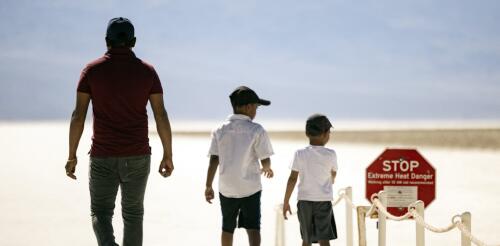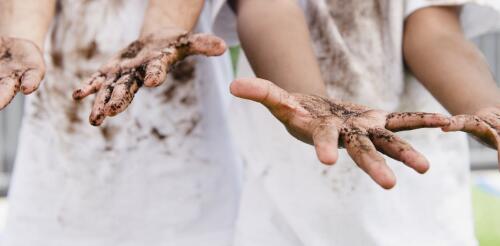Public health
A month into summer 2024, the vast majority of the U.S. population had already experienced at least one extreme heat wave, and millions of people were under heat alerts, with forecasts warning of more ahead. Death Valley hit 125 degrees Fahrenheit (51.7 Celsius) or higher for nine consecutive days in early July. Las Vegas broke its all-time heat record at 120 F (48.9 C). Days of 100-degree heat dried out the California landscapes, fueling wildfires there and in the Northwest. Oregon reported several suspected heat deaths. Globally, the planet had its hottest day in at least eight decades of recordkeeping on July 21 – and then broke the record again on July 22, according to the European Union’s Copernicus Climate Change Service. The extreme heat is part of a longer trend: Each of the past 13 months has been the hottest on record for that month globally, including the hottest June, the EU service reported in early July. It also found that the average temperature for t...
The heat wave that left more than 100 million people sweating across the eastern U.S. in June 2024 hit so fast and was so extreme that forecasters warned a flash drought could follow across wide parts of the region. Prolonged high temperatures can quickly dry soils, triggering a rapid onset drought that can affect agriculture, water resources and energy supplies. Many regions under the June heat dome quickly developed abnormally dry conditions. The National Oceanic and Atmospheric Administration’s hazard outlook map shows flash drought warnings in yellow and areas forecast to have a high risk of excessive heat in early July in red. NOAA Climate Prediction Center The human impacts of the heat wave have also been widespread. In Ohio and Pennsylvania, emergency room visits for heat-related illnesses surged. Several Massachusetts schools without air conditioning closed to protect kids and teachers...
As spring phases into summer across the U.S., kids are spending more time outdoors. Playing outside is healthy in all kinds of ways, but it also poses some risks. One that many families may not be aware of is exposure to lead in soil, which is still a serious problem, mainly in cities. Children can be exposed to lead by swallowing or inhaling soil while they are playing. Young children often put their hands in their mouths and may have dirt on their hands. Kids and pets also can track lead dust from soil indoors. And anyone who eats fruit or vegetables grown in contaminated soil can ingest lead. Early in 2024, the U.S. Environmental Protection Agency lowered the screening level for lead in residential soils from 400 parts per million – a standard that was more than 30 years old – to 200 parts per million. This more protective lower number reflects current understanding of soil as a significance source of lead exposure for children. EPA officials said that at homes...
It’s become common to read that microplastics – little bits of plastic, smaller than a pencil eraser – are turning up everywhere and in everything, including the ocean, farmland, food and human bodies. Now a new term is gaining attention: nanoplastics. These particles are even tinier than microplastics – so small that they’re invisible to the naked eye. Nanoplastics are a type of microplastic, distinguished by their extremely small size. Microplastics are usually less than 5 millimeters across; nanoplastics are between 1 and 1,000 nanometers across. For comparison, an average human hair is roughly 80,000-100,000 nanometers wide. Nanoplastics are attracting growing concern thanks to recent technological advances that have made researchers more able to detect and analyze them. Their smaller size means that they are more easily transported over long distances and into more diverse environments than microplastics. They can more easily penetrate cells a...
Did you receive a mail-order package this week? Carriers in the U.S. shipped 64 packages for every American in 2022, so it’s quite possible. That commerce reflects the expansion of large-scale retail in recent decades, especially big-box chains like Walmart, Target, Best Buy and Home Depot that sell goods both in stores and online. This has led to the growth of distribution centers that fulfill these orders. While mail-order commerce is convenient, these centers also have harmful impacts, including traffic congestion and air and water pollution. I study environmental history, and I am part of a group of scholars examining the environmental impacts of big-box stores like Walmart, Target, REI and Bass Pro Shops. Sustainability is a hot topic in the retail sector, but my research on the history of Target – the sixth-largest retailer in the U.S. – shows how retail companies have largely escaped the kinds of environmental regulations that affect other sectors such...




